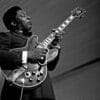The Great Migration significantly impacted jazz and blues music by facilitating the spread of these genres to Northern cities, where they flourished and evolved. The movement led to the fusion of different musical influences and experiences, contributing to the development of new styles and sounds in jazz and blues.
The migration also enabled talented musicians to find new opportunities and audiences, ultimately shaping the course of American music history. As African Americans moved from the South to urban centers, they brought their musical traditions with them, blending them with the urban environment to create a rich tapestry of musical innovation.
This cultural exchange and adaptation played a crucial role in shaping the distinctive sound of jazz and blues during the early to mid-20th century.
Background Of The Great Migration
The Great Migration brought about significant changes in jazz and blues music, shaping their development and evolution. As African Americans moved from the rural South to urban areas, such as Chicago and New York, they brought their musical traditions with them, leading to the emergence of new styles and influences in jazz and blues.
This migration played a crucial role in diversifying and enriching the sound of these genres, contributing to their enduring popularity.
The Great Migration was a significant movement of African Americans from the rural Southern states to the urban areas of the North, Midwest, and West in the United States during the early 20th century. This migration, which occurred between 1916 and 1970, was driven by various factors, including social, economic, and political conditions that African Americans faced in the South.
Causes Of The Great Migration
The causes of the Great Migration were rooted in the harsh realities of racial discrimination and segregation in the Southern states. African Americans faced limited job opportunities, poverty, and oppression, which motivated them to seek better lives elsewhere. Moreover, the rise of the KKK and continued violence against African Americans also played a role in pushing them to leave the South in search of safety and freedom.
Impact On African American Communities
The Great Migration had a profound impact on African American communities, both in the South and in the destination cities of the North. It brought about significant cultural, social, and economic changes. In the South, the departure of a large number of African Americans created labor shortages and affected agricultural production. On the other hand, in the North, African Americans found new employment opportunities and higher wages, leading to the growth of a vibrant urban black middle class.
Destination Cities And Conditions
African Americans who participated in the Great Migration settled in various cities across the United States, with major destinations being Chicago, Detroit, New York, and Los Angeles. These urban areas offered the promise of better living conditions, improved access to education, and increased opportunities for economic advancement. However, the reality for many migrant African Americans was often characterized by overcrowded housing, limited social services, and continued racial discrimination, albeit to a lesser extent than in the South.

Credit: news.berkeley.edu
Origins Of Jazz And Blues
The origins of Jazz and Blues can be traced back to the early 20th century and are intimately tied to the Great Migration, which greatly impacted the development and evolution of these two iconic music genres. As African Americans moved from the rural south to the urban north, they brought with them their rich musical traditions, which eventually gave birth to Jazz and Blues. Understanding the early development of Jazz, as well as the roots and influence of the blues, provides valuable insight into the profound effect of the Great Migration on these musical styles.
Early Development Of Jazz
The early development of Jazz can be attributed to the vibrant cultural mix of African American communities in cities like New Orleans and Chicago. Influenced by ragtime, spirituals, and blues, Jazz emerged as a unique form of musical expression characterized by improvisation, syncopation, and swing rhythms. The integration of diverse musical traditions and the creative freedom of Jazz musicians laid the foundation for a revolutionary genre that continues to captivate audiences worldwide.
The Blues And Its Roots
The blues has its roots in the songs of African American slaves and the hardships they endured. Characterized by its soulful and emotional lyrics, the blues encapsulated the pain, resilience, and hope of the African American experience. Rooted in African musical traditions and spirituals, the blues found its voice in the deep south before spreading to urban centers during the Great Migration. It became the cornerstone of many musical styles, including Jazz, and its influence is still profoundly felt in modern music.
Influence Of African American Culture On Music
The Great Migration played a pivotal role in shaping the trajectory of Jazz and Blues by bringing together diverse African American experiences and musical traditions. This convergence of cultures and experiences led to an explosion of creativity and innovation, as artists drew inspiration from their surroundings to create music that resonated with their communities. The migration not only facilitated the spread of Jazz and Blues across the country but also contributed to the enrichment of American musical heritage.
The Great Migration And Jazz Music
The Great Migration had a profound impact on Jazz and Blues music, transforming it into a powerful and influential genre. As African Americans migrated from the South to the North, they brought their musical talents and traditions with them, resulting in the birth of new styles and fusion of different rhythms and sounds.
The migration acted as a catalyst for the development of Jazz and Blues, creating a rich cultural exchange and giving voice to the experiences of African Americans in a changing society.
“`html The Great Migration and Jazz Music The Great Migration, a mass movement of African Americans from the rural South to the urban North, had a profound impact on the development of jazz music. This migration, which occurred from 1916 to 1970, led to the relocation of many talented musicians and the diffusion of jazz and blues across the United States.
Movement Of Musicians
During the Great Migration, jazz musicians from the South, such as Louis Armstrong and Duke Ellington, relocated to cities like Chicago, New York, and Detroit in search of better opportunities. This movement of talent resulted in the convergence of various regional styles, leading to the enrichment and diversification of jazz music.
Bringing Jazz To New Audiences
As African Americans migrated to urban centers, they brought their cultural traditions, including jazz and blues, with them. Jazz was performed in clubs and speakeasies, captivating diverse audiences and creating a platform for its widespread popularity. Consequently, this migration brought jazz to new audiences, contributing to its national recognition and global influence.
Evolution Of Jazz Styles During The Migration
The Great Migration facilitated the fusion of different musical elements, leading to the evolution of jazz styles such as swing, bebop, and cool jazz. Musicians from various cultural backgrounds collaborated, resulting in an innovative and unique blend of sounds. This period of musical cross-pollination produced influential artists and significant recordings that shaped the future of jazz. “`
The Great Migration And Blues Music
The Great Migration saw millions of African Americans move from the rural South to urban areas in the North, Midwest, and West between 1916 and 1970. This massive demographic shift had a profound impact on various aspects of American culture, including music. One genre that particularly flourished during this time was blues music, with its raw and emotive expression of the hardships faced by African Americans during this period.
Expression Of Hardships Through The Blues
The blues originated in the Deep South as a form of musical expression for African Americans, often serving as an outlet to convey their experiences of poverty, discrimination, and oppression. This music became even more poignant during The Great Migration, as the lyrics and melodies captured the struggles and challenges faced by those making the arduous journey to the cities in search of better opportunities.
Spread Of The Blues To Different Regions
The Great Migration not only allowed for the spread of African American culture and traditions to new areas but also facilitated the dissemination of blues music. As migrants settled in cities such as Chicago, Detroit, and New York, they brought with them their musical heritage, including the blues. The vibrant and bustling urban environments provided new platforms and audiences for blues musicians to thrive, leading to the genre’s expansion and evolution.
Popularization Of Blues Recordings
The rise of the recording industry during The Great Migration era played a crucial role in popularizing blues music. With the development of technologies such as phonographs and jukeboxes, blues recordings became more accessible to a wider audience. This broad exposure helped increase the reach and influence of the blues, allowing its powerful message and soulful melodies to resonate with people far beyond the African American community.
Impact Of The Great Migration On Jazz
The Great Migration during the early 20th century had a profound impact on the development and evolution of jazz music in America. As African Americans moved from the rural South to urban areas in the North, such as Chicago and New York City, they brought with them their rich musical heritage and cultural experiences. This transformative movement not only influenced jazz as a genre but also contributed to the cultural exchange between musicians, the development of unique regional jazz scenes, and the influence on the Harlem Renaissance.
Cultural Exchange Between Musicians
The movement of African Americans during the Great Migration facilitated a vibrant cultural exchange among musicians from different backgrounds. The migration brought together a diverse range of musical traditions, including African rhythms, gospel music, and traditional blues. This intermingling of musical styles and influences resulted in the creation of new sounds and techniques that would shape the future of jazz music.
Development Of Unique Regional Jazz Scenes
The Great Migration led to the development of unique regional jazz scenes in cities like Chicago and New York. As African American communities grew in these urban areas, so did the demand for live entertainment. Jazz musicians found plentiful opportunities to perform in clubs, theaters, and dance halls, allowing them to innovate and refine their craft. This growth in urban jazz scenes gave rise to distinct regional variations, such as Chicago-style jazz and Harlem stride piano, adding to the diversity and richness of the jazz genre.
Influence On The Harlem Renaissance
The Great Migration was a significant catalyst for the flourishing of the Harlem Renaissance, an art and cultural movement that celebrated African American heritage and creativity. As thousands of Black individuals moved to Harlem, the neighborhood became a vibrant hub of artistic expression, attracting musicians, poets, writers, and visual artists. The migration brought together talented jazz musicians who collaborated with other artists, fostering a dynamic exchange of ideas and contributing to the growth and recognition of jazz as an art form.
Impact Of The Great Migration On Blues
The Great Migration had a profound impact on jazz and blues music, shaping their evolution and popularity. As African Americans moved from the South to Northern cities, their cultural experiences and struggles infused the music with soulful narratives of resilience and yearning, giving birth to the distinctive sound and themes of the blues.
The Great Migration, a significant movement of African Americans from the rural South to the urban North and West between 1916 and 1970, had a profound impact on various aspects of American culture. One area that experienced significant change was the blues music genre. The migration resulted in a blending of different regional blues styles, the migration of influential blues artists, and the creation of new music hubs. Let’s explore each of these impacts in more detail.
Blending Of Different Regional Blues Styles
The Great Migration brought together African Americans from different regions, each with their own unique blues traditions. This blending of regional styles resulted in a rich and diverse tapestry of blues music. Artists from the Mississippi Delta, like Robert Johnson, crossed paths with musicians from Texas, such as T-Bone Walker, and those from the Piedmont region, such as Blind Boy Fuller. The fusion of these diverse styles led to the development of new sounds and techniques within the blues genre. Musicians experimented with different chord progressions, rhythms, and lyrical themes, creating a more dynamic and evolving form of blues music.
Migration Of Influential Blues Artists
The Great Migration provided opportunities for talented blues musicians to leave the oppressive Jim Crow South and seek better prospects in the urban North. Prominent artists like B.B. King and Muddy Waters relocated from Mississippi to cities like Chicago and Detroit. Their migration not only brought their exceptional musical abilities to new audiences but also influenced the musicians they encountered in their new homes. The migration of these influential blues artists served as a catalyst for the spread and popularity of the blues genre in the urban centers, leaving an indelible mark on its evolution.
Creation Of New Music Hubs
As African Americans settled in new urban areas during the Great Migration, vibrant music communities began to emerge. Cities like Chicago, Detroit, and New York became significant music hubs where blues music thrived. These cities provided musicians with platforms to perform, record, and connect with like-minded individuals. Blues clubs and juke joints became important gathering places for both musicians and fans, fostering an environment conducive to the growth and development of the blues genre. The creation of these new music hubs contributed to the expanding reach and influence of blues music across the United States.
The Great Migration And Music Industry
The Great Migration, which took place between 1910 and 1970, had a profound impact on the development of jazz and blues music. As millions of African Americans migrated from the rural South to the urban cities of the North, such as Chicago, Detroit, and New York, a vibrant cultural exchange occurred. This cultural shift not only affected the lives of those who participated in the migration but also transformed the music industry.
The movement of African Americans during the Great Migration brought about an expansion of recording opportunities for jazz and blues musicians. As they settled in the urban centers, they found themselves in close proximity to various recording studios. Record labels recognized the potential market among African American communities and were eager to capture the unique sounds of jazz and blues.
H3: Increased demand for live performances
The Great Migration resulted in increased demand for live jazz and blues performances. As African Americans migrated to the North, they brought with them their rich musical traditions, creating a vibrant live music scene in the urban centers. African American communities eagerly sought opportunities to enjoy and participate in live performances, leading to the growth of clubs and venues dedicated to jazz and blues music.
H3: Role of migration in the growth of music labels
The migration of African Americans played a crucial role in the growth of music labels during the Great Migration. Record labels recognized the potential market among African American communities and actively sought out talented jazz and blues musicians to record and promote their music. This led to the establishment of influential labels such as Chess Records and Blue Note Records, which became instrumental in shaping the landscape of jazz and blues music.
| Factors | Effects |
|---|---|
| Expansion of recording opportunities | Increase in recordings of jazz and blues music |
| Increased demand for live performances | Growth of jazz and blues clubs and venues |
| Role of migration in the growth of music labels | Establishment of influential jazz and blues record labels |
In conclusion, the Great Migration had a profound impact on jazz and blues music. The movement of African Americans resulted in an expansion of recording opportunities, increased demand for live performances, and played a crucial role in the growth of music labels. These factors not only shaped the music industry but also contributed to the enduring legacy of jazz and blues music.

Credit: www.thecollector.com
Prominent Musicians And Performers
During the Great Migration, the movement of African Americans from the rural South to the urban North had a profound impact on the development and evolution of jazz and blues music. This significant demographic shift brought about cultural exchanges, exposure to new musical styles, and a fertile ground for creativity, leading to the emergence of influential musicians and performers.
Louis Armstrong And The Chicago Scene
Louis Armstrong, a pivotal figure in jazz history, rose to fame amidst the vibrant music scene in Chicago during the Great Migration. His innovative trumpet playing and distinctive vocal style greatly influenced the development of jazz, propelling the genre to new heights of popularity and artistry. Armstrong’s contributions served as a cornerstone of the Chicago jazz scene, shaping the city’s musical identity during this transformative period.
Ma Rainey And The Southern Blues Tradition
Ma Rainey, known as the “Mother of the Blues,” was an influential blues singer who played a significant role in maintaining and expanding the Southern blues tradition during the Great Migration. Her powerful vocal performances and expressive storytelling captured the essence of the African American experience, contributing to the preservation and evolution of blues music as it journeyed from the South to the urban centers of the North.
Bessie Smith And The Impact Of Migration
Bessie Smith, often referred to as the “Empress of the Blues,” left an indelible mark on blues music, exemplifying the impact of migration on the genre. As African Americans migrated north, Smith’s commanding voice and emotionally charged delivery resonated with audiences, reflecting the hardships and aspirations of the Great Migration. Her influential recordings and performances solidified her status as a trailblazer in the evolution of blues music during this pivotal historical period.
Legacy Of The Great Migration In Jazz
The legacy of the Great Migration in jazz is a testament to the profound impact of this mass movement of African Americans from the South to urban centers in the North. The migration not only reshaped the social and cultural landscape of America but also significantly influenced the development of jazz and blues music, leaving an indelible mark on the musical traditions of subsequent generations.
Influence On Subsequent Generations
The Great Migration profoundly influenced subsequent generations of jazz musicians, as they inherited and expanded upon the musical innovations and experiences of their predecessors. The fusion of different regional styles and influences brought about by the migration created a rich tapestry of musical expression that continues to inspire and influence jazz artists to this day.
Integration Of Different Musical Traditions
The migration facilitated the integration of diverse musical traditions, as musicians from various regions and backgrounds came together in the urban centers of the North. This convergence gave rise to a cross-pollination of musical styles and cultural influences, leading to the emergence of new and innovative sounds in jazz and blues music.
Recognition Of Migration’s Role In Jazz History
The recognition of the Great Migration’s pivotal role in shaping the history of jazz has elevated the awareness and appreciation of its profound impact. Through scholarly research and artistic endeavors, the migration’s influence on jazz has been acknowledged, ensuring that its significance will be preserved and celebrated for generations to come.
Legacy Of The Great Migration In Blues
The Great Migration significantly influenced the development of blues and jazz music, leading to a rich cultural legacy. As African Americans moved from the South to urban cities, their experiences and emotions shaped the lyrical content and musical styles of these genres.
This migration transformed the blues and jazz, contributing to their enduring impact on American music.
Evolution Of Blues Styles Post-migration
The legacy of the Great Migration had a profound impact on the development of blues music. African Americans, seeking better economic opportunities and escaping discrimination in the South, migrated to cities in the North such as Chicago, Detroit, and New York. This mass movement of people brought together musicians from various backgrounds, resulting in a fusion of different blues styles that shaped the course of the genre. The migration led to the evolution of blues styles post-migration. In the urban centers of the North, musicians not only preserved traditional forms of blues but also experimented with new sounds and techniques. This era witnessed the emergence of electric blues, a style characterized by amplified instruments and a more energetic sound. Artists like Muddy Waters and B.B. King became instrumental in popularizing this new form of blues, which helped bridge the gap between blues and rock ‘n’ roll.
Continued Migration Patterns In Blues
The influence of the Great Migration did not end with the initial wave of movement. Migration patterns continued to shape the blues music landscape long after the initial migration period. As African Americans sought economic opportunities in different cities and regions, they carried their musical traditions with them. This led to the spread of blues styles across the United States, resulting in distinct regional variations such as Delta blues, Chicago blues, and West Coast blues. The continued migration patterns in blues allowed for the exchange of musical ideas and the development of unique regional sounds. Artists like Robert Johnson in the Mississippi Delta, Muddy Waters in Chicago, and T-Bone Walker on the West Coast embodied the diverse influences brought about by migration. Each region added its own flavor to the blues, contributing to the rich tapestry of the genre.
Preservation Of Migration Stories Through Blues Music
One of the most significant contributions of blues music to the legacy of the Great Migration is the preservation of migration stories. Through their music, blues artists chronicled the experiences, struggles, and aspirations of African Americans during this period of mass movement. The lyrics and melodies of blues songs often captured the longing for a better life, the challenges faced, and the resilience of those who ventured out in search of new opportunities. Blues music served as a means of oral history, ensuring that the stories and experiences of migrants were not forgotten. It became a powerful medium for expressing the emotions, joys, and sorrows associated with migration. Songs like “Sweet Home Chicago” and “Mannish Boy” by Muddy Waters and “Cross Road Blues” by Robert Johnson resonate with the struggles and dreams of those who left their homes in the South. In conclusion, the legacy of the Great Migration in blues music is undeniable. It brought about the evolution of blues styles, continued migration patterns, and served as a medium for preserving migration stories. The impact of this historical movement can still be heard and felt in the blues music of today, reminding us of the enduring power of music to reflect the human experience.

Credit: www.ft.com
Frequently Asked Questions For How Did The Great Migration Affect Jazz And Blues Music
How Did The Great Migration Impact Jazz And Blues Music?
The Great Migration had a profound influence on jazz and blues music by bringing together diverse African-American cultures, facilitating the fusion of different musical styles, and inspiring musicians to explore new themes and experiences.
What Role Did The Great Migration Play In The Development Of Jazz?
The Great Migration played a pivotal role in the development of jazz by creating a fertile environment for cultural exchange, exposing musicians to new sounds and rhythms, and promoting collaboration between different regional music traditions.
How Did The Great Migration Shape The Blues Genre?
The Great Migration shaped the blues genre by providing musicians with a platform to express their struggles, hopes, and experiences in the context of urban life, leading to the exploration of new themes and the evolution of blues music.
What Cities Were Central To The Influence Of The Great Migration On Jazz And Blues?
Cities such as Chicago, New York, and St. Louis were central to the influence of the Great Migration on jazz and blues, as they became vibrant cultural hubs where musicians from different backgrounds could connect and collaborate.
Did Jazz And Blues Music Change After The Great Migration?
Yes, jazz and blues music underwent significant changes after the Great Migration, with musicians incorporating new musical elements, embracing urban influences, and exploring innovative styles that reflected their experiences in the urban environment.
How Did The Great Migration Affect The Popularity Of Jazz And Blues?
The Great Migration contributed to the increased popularity of jazz and blues music as it spread the sounds and styles of these genres to a wider audience, both within African-American communities and beyond.
What Social And Cultural Factors Contributed To The Connection Between The Great Migration And Jazz And Blues?
The social and cultural factors that contributed to the connection between the Great Migration and jazz and blues included the search for better economic opportunities, the desire for freedom and equality, and the rich cultural heritage brought by African-Americans from the South.
What Famous Musicians Emerged During The Great Migration?
During the Great Migration, famous musicians such as Louis Armstrong, Bessie Smith, Muddy Waters, and Duke Ellington emerged, leaving a lasting legacy in both jazz and blues music.
How Did The Great Migration Influence The Lyrical Content Of Jazz And Blues Songs?
The Great Migration influenced the lyrical content of jazz and blues songs by inspiring artists to write about themes such as the struggles of urban life, social injustice, and the search for personal identity and freedom.
How Is The Impact Of The Great Migration Still Felt In Jazz And Blues Music Today?
The impact of the Great Migration is still felt in jazz and blues music today through the continued exploration of diverse musical styles, the incorporation of personal experiences and social commentary in songwriting, and the celebration of the cultural heritage brought about by the migration.
Conclusion
To summarize, the Great Migration brought profound changes to the landscape of jazz and blues music. African Americans seeking new opportunities and fleeing racial discrimination brought their unique musical traditions to bustling cities. The vibrant cultural mix and musical exchange in urban centers fueled the growth of jazz and blues as innovative and influential genres.
From the lively sounds of New Orleans to the soulful tunes of Chicago, the Great Migration played a pivotal role in shaping the evolution of jazz and blues.














